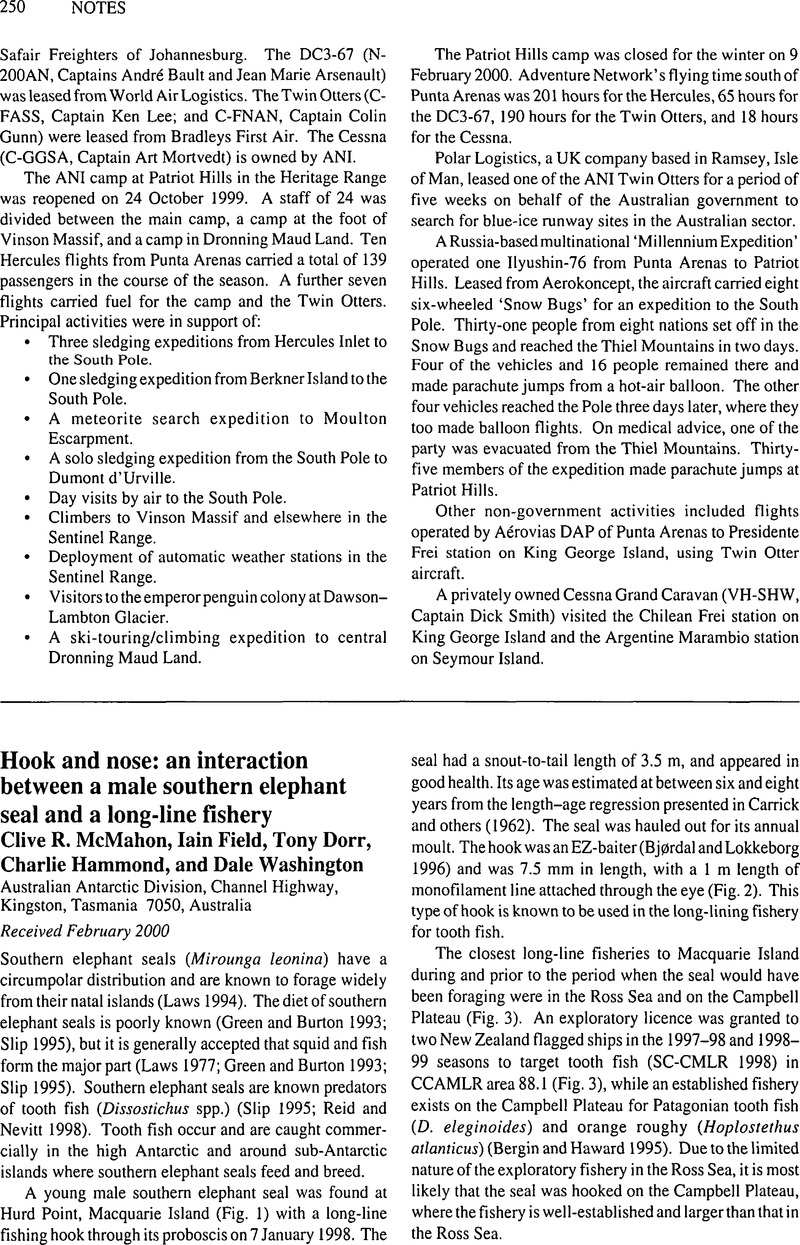Crossref Citations
This article has been cited by the following publications. This list is generated based on data provided by Crossref.
Campagna, Claudio
Falabella, Valeria
and
Lewis, Mirtha
2007.
ENTANGLEMENT OF SOUTHERN ELEPHANT SEALS IN SQUID FISHING GEAR.
Marine Mammal Science,
Vol. 23,
Issue. 2,
p.
414.
O’Toole, M
Hindell, MA
Charrassin, JB
and
Guinet, C
2014.
Foraging behaviour of southern elephant seals over the Kerguelen Plateau.
Marine Ecology Progress Series,
Vol. 502,
Issue. ,
p.
281.
van den Hoff, John
Kilpatrick, Robbie
Welsford, Dirk
and
Österblom, Henrik
2017.
Southern elephant seals (Mirounga leonina Linn.) depredate toothfish longlines in the midnight zone.
PLOS ONE,
Vol. 12,
Issue. 2,
p.
e0172396.



